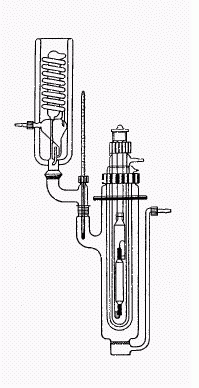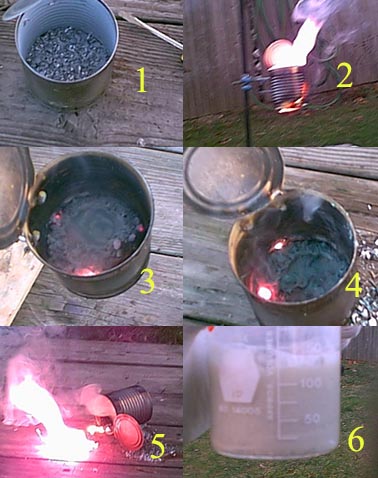<font face=symbol>D</font>H°<sub>f</sub> for NaNO<sub>3</sub> and Al<sub>2</sub>O<sub>3</sub> are -424.8 & -1669.8 KJ
NaNO<sub>3</sub> <s> ></s> Na(s) + 0.5 N<sub>2</sub> + 1.5 O<sub>2</sub> - 424.8 KJ (in thermodynamic you can use any theorical equation)
1.5 O<sub>2</sub> + 2 Al <s> ></s> Al<sub>2</sub>O<sub>3</sub> + 1669.8 KJ
Na(s) <s> ></s> Na(g) <font face=symbol>D</font>H<sub>subl</sub>= +108 KJ
1669.8-424.8-108=1137 so
<font color=green>NaNO<sub>3</sub> + 2 Al <s> ></s> Na(g) + 0.5 N<sub>2</sub> + Al<sub>2</sub>O<sub>3</sub> + 1137 KJ</font>

Na<sub>2</sub>CO<sub>3</sub> <font face=symbol>D</font>H°<sub>f</sub>= -1130.9 KJ/mol
1669.8-1130.9-108=430.9
<font color=green>Na<sub>2</sub>CO<sub>3</sub> + 2 Al <s> ></s> 2Na(g) + C + Al<sub>2</sub>O<sub>3</sub> + 430.9 KJ</font>
NaOH <font face=symbol>D</font>H°<sub>f</sub>= -426.7 KJ/mol
((1/3)*1669.8)-426.7-108=21.9
<font color=green>NaOH + 2/3 Al <s> ></s> Na(g) + 1/3 Al<sub>2</sub>O<sub>3</sub> + 0.5H<sub>2</sub> + 21.9 KJ</font>




 Sodium acetate, to be
specific. It melts at 324 C, so a hotplate will do the job, never mind a gas flame. Another MSDS states the mp as being 58 C, but 324 C is supported
by two MSDS's, while the 58 C figure only by one. NEVER TRUST MSDS'S ON TEMPERATURES (this is not my first experience of MSDS's not
agreeing with each other and being self-contradictory - e.g. in two MSDS's the mp of urea is stated as 133 C... ...and the bp as 135 C!). I do
agree that the longer the hydrocarbon chain, the lower the mp, but the viscosity is likely to increase as well, thus slowing down gas bubbles that
escape and, with very long chains, turning into froth upon electrolysis.
Sodium acetate, to be
specific. It melts at 324 C, so a hotplate will do the job, never mind a gas flame. Another MSDS states the mp as being 58 C, but 324 C is supported
by two MSDS's, while the 58 C figure only by one. NEVER TRUST MSDS'S ON TEMPERATURES (this is not my first experience of MSDS's not
agreeing with each other and being self-contradictory - e.g. in two MSDS's the mp of urea is stated as 133 C... ...and the bp as 135 C!). I do
agree that the longer the hydrocarbon chain, the lower the mp, but the viscosity is likely to increase as well, thus slowing down gas bubbles that
escape and, with very long chains, turning into froth upon electrolysis. 



